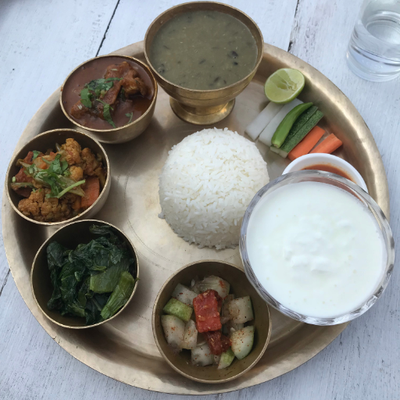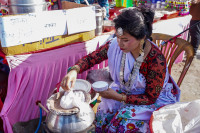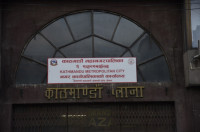Food
Piano B hits perfect notes with its pasta, but there is dissonance in its appetisers
With the restaurant in full-swing, tables full, it becomes evident who this restaurant targets. The prices would be prohibitive for many, singling out a kuire crowd, but a small handful of Nepalis do appear later in the evening.
Hantakali
In the hierarchy of traditional Italian eateries, the osteria is both the starting point and the benchmark. Traditionally serving wine first and food second, Italians frequent such places to drink and eat, as such. While an osteria would place itself within the realm of watering holes, kuire and locals equally come to Piano B for the food.
Looking at the Ekantakuna restaurant’s menu alone signals to diners they are in a proper Italian osteria. The romance language sings a short song of fewer than 20 dishes, such as bruschetta, ravioli, carpaccio and gelato, while the large orchestral wine list provides a befittingly diverse backing track. Composed of wine varietals hailing from Italy, France, India and Bosnai-Herzegovina (not Hantakali’s typo), the wine is bolstered by Aperol and Campari — two aperitifs everyone should try at least once, in some form — and some imported beers.
But whether the song sheet delivers on its ode is another question.
Unlike the pomp and posturing of orchestral and operatic hotel restaurants in Kathmandu, this osteria has firmly planted itself in the restaurant circuit as an unstuffy place. It’s a spot where people can be briefly transported from Kathmandu’s smog and spice to fundamentally fresh Italy.
 The raviolo agli spinaci is a testament to Italian simplicity. Photo by: Anish Regmi
The raviolo agli spinaci is a testament to Italian simplicity. Photo by: Anish RegmiSitting down in a dimly-lit dining room, contemporary lounge music playing in the background, the waitress swoops in with a small crate of freshly-sliced bread, flatbreads and breadsticks to dip into the small ramekins of grassy olive oil and lip-smacking balsamic. Providing the perfect base for a glass of Bosnian blatina, the osteria wears its laxness proudly. The paper placemats, napkins; plain wooden tables and chairs; and still-in-the-packet salt and pepper, are far from overwrought—erring on the side of underthought. The mud-red walls have obligatory Campari posters, wine bottles and racks, and Italian regalia without being overtly cheesy, while an ever-changing menu is displayed on the chalkboard behind the well-appointed bar. That bar also plays host to the overflow of clients waiting for their fix—the fact it is midweek and the restaurant is busy is a sign of its popularity.
While it’s not especially Italian, not ordering the pâté di fegato di coniglio would be remiss. Served with small, lightly toasted crostini, the makeup-less grey log of blitzed rabbit liver speaks for itself. The addition of anchovies pronounces the pâté’s distinct richness without being overwhelmed by the saline sprats. Bruschetta al pomodoro follows, rather than the enticing carciofi artichoke iteration, to test how true to tradition Piano B is. What appears is a large glorified salad on toast, with all the flavours one should expect: tomato, check; toast, check; pungent garlic— but that raw sting is somewhere else. Rather, the fresh garlic is substituted by richer, roasted garlic. A peppery bite comes from finely-dressed arugula intertwined in chunks of cherry tomato.
The accompanying carpaccio di barbabietola concoction of beetroot, fennel, ricotta and orange is chunkier than one would expect, as carpaccio typically makes a thinner promise, while the salad yearns for a light shower of olive oil. The quenelle of herby ricotta, however, provides a level of milkiness.
 The tortino al cioccolate e gelato is rich, molten and viscous. Photo by: Anish Regmi
The tortino al cioccolate e gelato is rich, molten and viscous. Photo by: Anish RegmiWith the restaurant in full-swing, tables full, it becomes evident who this restaurant targets. The prices would be prohibitive for many, singling out a kuire crowd, but a small handful of Nepalis do appear later in the evening. With the dining room bustling and loud, the waitress, who is possibly new, takes our plates but leaves behind our dirty cutlery to taint the next course. Out come the napkins to clean them instead.
Relatively soon after the appetisers, a succession of mains arrive—ravioli agli spinaci, bucatini all’amatriciana and rotolo di pollo. The rotolo di pollo is as promised—chicken, with parma ham, ricotta and sun-dried tomatoes sandwiched between breasts. The salty, rich tomato and ham drive the flavour home—the ricotta and chicken are just the vehicles. The side potatoes are tasty morsels but a little overdone, dehydrated and chewy, while the salad is a tart and well-seasoned mix of green leaves, julienned carrot and red cabbage (like the carpaccio should have been).
Both the pasta dishes have no real faults, perfectly cooked al dente. Sliced guanciale, a salume of cured pig’s jowl, and a fiery mix of chilli, garlic, black pepper and tomato constitute the all’amatriciana sauce. Topped with salty pecorino, the chef’s use of cylindrical bucatini is a masterstroke, as it makes each bite delightfully hellish and leaves the diner reaching for liquid respite.
The winning pasta dish, however, is the ravioli agli spinaci. This delightfully simple dish of small pasta packets, filled with spinach and milky ricotta cheese, is a testament to Italian simplicity. These wee Italian momos, floating on a puddle of creamy tomato sauce and blanketed with cheese, are heartwarmingly straightforward and faultless.
 The spicy bucatini is delightfully hellish. Photo by: Anish Regmi
The spicy bucatini is delightfully hellish. Photo by: Anish RegmiFollowing such simplistic fare, and coming to an end of the confidently small menu, there are just two desserts on offer. So, dessert stomachs preened, it’s only sane to order both the tortino al cioccolato e gelato and a scoop of gelato. The scoop of chocolate gelato is, well, chocolatey enough to satisfy, and perfectly paired with the restaurant’s Italian espresso. The texture is gluey enough to pick a fight with the spoon before lining the palate with its richness. But the cocoa coup de grace comes in the form of the tortino. Unlike dormant Vesuvius, this chocolate lava cake’s insides are appropriately molten and viscous. Icey passionfruit gelato cools the magmatic flow and interrupts its lusciousness.
The luxuriousness of the menu’s final molten note rings through the palate and almost helps one forget the occasional bum note. Piano B justifies its self-dubbed “pastapur” moniker by providing great pasta, and also lives up to the osteria concept of providing no-fuss fare and good wine while adding its own occasional trill and flourish.
Rating:
Piano B: Rs 1000-3000
Food: ★★★ ½
Ambience: ★★★★
Value: ★★★




 13.12°C Kathmandu
13.12°C Kathmandu











